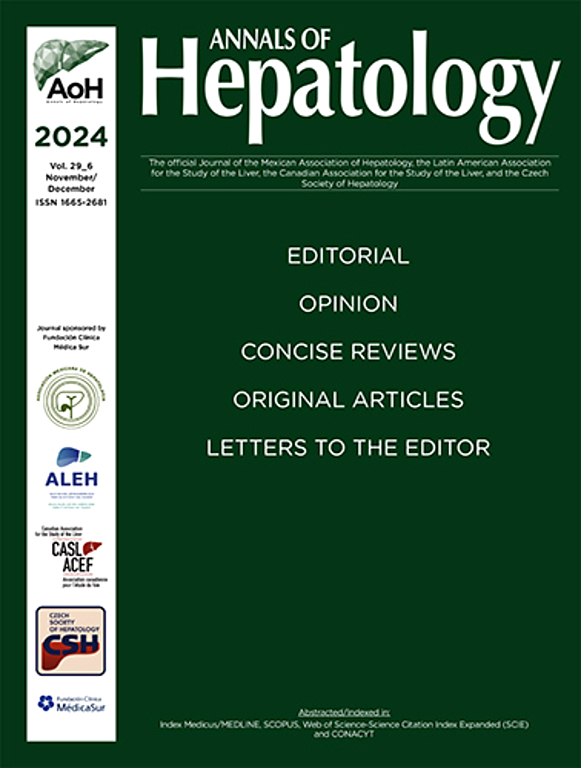P-14 DETECTION OF CIRRHOSIS DUE TO ALPHA-1 ANTITRYPSIN DEFICIENCY IN ADULTS: PHENOTYPE STUDY IN COSTA RICA
IF 3.7
3区 医学
Q2 GASTROENTEROLOGY & HEPATOLOGY
引用次数: 0
Abstract
Conflict of interest
No
Introduction and Objectives
Alpha-1 antitrypsin (A1AT) levels are normal in up to 20% of liver diseases, and this protein elevates in inflammatory states, causing false negatives. This disease does not follow an autosomal recessive inheritance pattern, so the classical concept of homozygosity does not apply. Instead, two codominant alleles manifest as liver or lung disease. Objectives: To determine the phenotypes associated with A1AT-related liver disease in Costa Rica.
Patients / Materials and Methods
Phenotypes detected in patients with suspected A1AT deficiency from 2014 to July 2024 were analyzed. Phenotype identification was carried out using isoelectric focusing in agarose gel with immunofixation. The presence of liver disease was determined through clinical, laboratory, and imaging findings.
Results and Discussion
During the specified period, 371 phenotype studies were conducted on 187 women and 184 men. The identified phenotypes were: 15 ZZ probands, 22 MZ probands, 1 SZ proband, 7 MS probands, 1 SS proband, 1 null proband, 1 M/null proband, 31 MM probands, and 2 null/null probands. No Z/null proband was detected. Among 53 probands, there were: 10 ZZ, 13 MZ, 1 SZ, 4 MS, 1 SS, 1 null, and 23 MM. It was established that the risk of liver disease is slightly increased in MZ, increased in SZ, and very increased in ZZ. Cirrhosis was diagnosed in 19 probands: 7 ZZ, 7 M/null, 4 MZ, and 1 SZ.
Conclusions
A1AT quantification has a 20% false-negative rate, so phenotype testing is recommended when there is suspicion. In Costa Rica, the ZZ variant has the highest risk of liver disease, followed by SZ and MZ; the M/null phenotype was also detected as a cause of liver disease. Medical monitoring is necessary, and in doubtful cases, genotype testing should be performed.
求助全文
约1分钟内获得全文
求助全文
来源期刊

Annals of hepatology
医学-胃肠肝病学
CiteScore
7.90
自引率
2.60%
发文量
183
审稿时长
4-8 weeks
期刊介绍:
Annals of Hepatology publishes original research on the biology and diseases of the liver in both humans and experimental models. Contributions may be submitted as regular articles. The journal also publishes concise reviews of both basic and clinical topics.
 求助内容:
求助内容: 应助结果提醒方式:
应助结果提醒方式:


